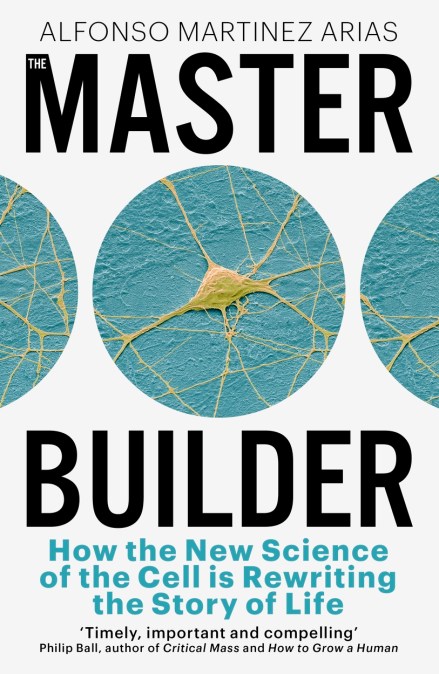‘Timely, important and compelling’ Philip Ball
‘A new and stunning argument’ Azra Raza
What defines who we are?
Until now, the biological answer has been our genes. Leading biologist Alfonso Martinez Arias breaks with popular tradition to make a bold argument: what defines us is our cells.
Drawing on groundbreaking research, he reveals that we are composed of a thrillingly complex, constantly rearranging symphony of cells that know how to count, feel, and give form to our bodies. While DNA is important, nothing in your genes explains why your heart is on the left, why you have five fingers and not ten, why genetically identical twins have different sets of fingerprints, or why it’s possible for a mother to apparently share no DNA with the children she gave birth to! At the heart of it all is a powerful new conception of the essence of life. Our identities are shaped by the interconnections between cells, working cooperatively, creating something greater than its parts – the unbroken lineage that connects us to the fertilized egg from which we developed and back through the billions of years of our planet’s history, to the very first cell of all life on Earth.
A sweeping revision of both the present and the history of life, The Master Builder puts forward a new paradigm for understanding biology, transforming our approach to where we come from, what shapes us, and where we are going – as individuals, a species, and the community of life itself.
‘A new and stunning argument’ Azra Raza
What defines who we are?
Until now, the biological answer has been our genes. Leading biologist Alfonso Martinez Arias breaks with popular tradition to make a bold argument: what defines us is our cells.
Drawing on groundbreaking research, he reveals that we are composed of a thrillingly complex, constantly rearranging symphony of cells that know how to count, feel, and give form to our bodies. While DNA is important, nothing in your genes explains why your heart is on the left, why you have five fingers and not ten, why genetically identical twins have different sets of fingerprints, or why it’s possible for a mother to apparently share no DNA with the children she gave birth to! At the heart of it all is a powerful new conception of the essence of life. Our identities are shaped by the interconnections between cells, working cooperatively, creating something greater than its parts – the unbroken lineage that connects us to the fertilized egg from which we developed and back through the billions of years of our planet’s history, to the very first cell of all life on Earth.
A sweeping revision of both the present and the history of life, The Master Builder puts forward a new paradigm for understanding biology, transforming our approach to where we come from, what shapes us, and where we are going – as individuals, a species, and the community of life itself.
Newsletter Signup
By clicking ‘Sign Up,’ I acknowledge that I have read and agree to Hachette Book Group’s Privacy Policy and Terms of Use
Reviews
A timely, important and compelling case for why an understanding of living organisms must start with the cell. He offers a vision of life that shows it to be much more interesting and ingenious than any simplistic notion of genetic blueprints can provide
This book makes a new and stunning argument, not so much that we should put DNA in its place, but that we can see the grandeur of life as it truly is
An ingenious argument . . . A rich, detailed exploration of the vitality of cells
Alfonso Martinez Arias's novel thesis invigorates, and the lucid scientific discussions will hold readers' attention even through involved examinations of how cells respond to specific proteins. This is the perfect complement to Siddhartha Mukherjee's The Song of the Cell
What came first, the chicken or the egg? In The Master Builder, Alfonso Martinez Arias poses a different question: what drives biology, genes or cells? His surprising answer shines new light on the fascinating riddle of development and offers a majestic cells-eye view of life itself
In this masterful account, geneticist and developmental biologist Alfonso Martinez Arias shows that, on its own, DNA is powerless, inert . . . This cell's-eye view of life is powerful and striking, helping to reveal why DNA is not the ultimate determinant of ourselves . . . This clearly explained, beautiful book will change how you think about DNA, about how you came to be, and about life itself
[A] revolutionary book on cell biology
Provocative . . . timely and needed. Highlights of the book include the many fascinating historical and evolutionary perspectives presented and Martinez Arias's discussion of key experiments
Fascinating and provocative
Martinez Arias, a developmental biologist, has lived and breathed the cell's struggle to be heard over a career spanning 40-odd years. His story is one of DNA elites against hardworking, blue-collar cells. Cells, not DNA, Martinez Arias points out, determine the ripples of our fingerprints and the texture of our irises

